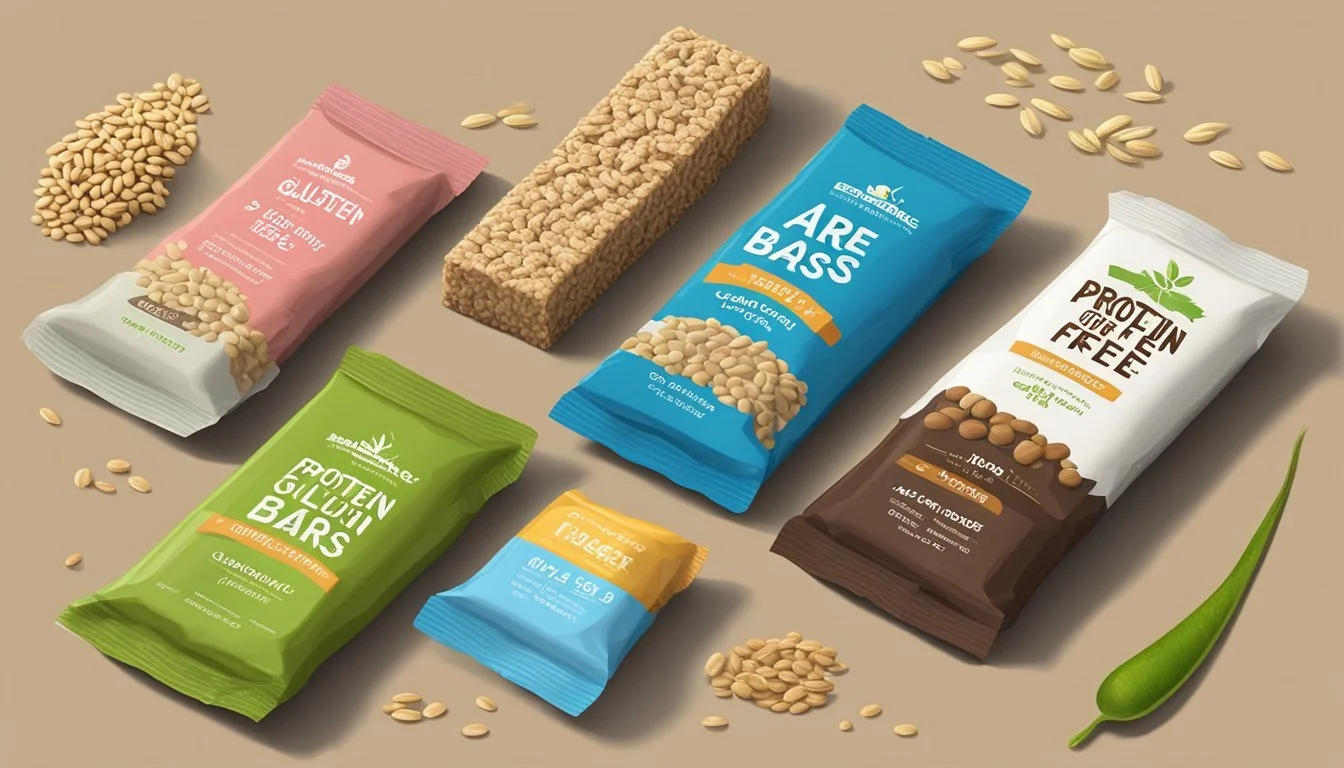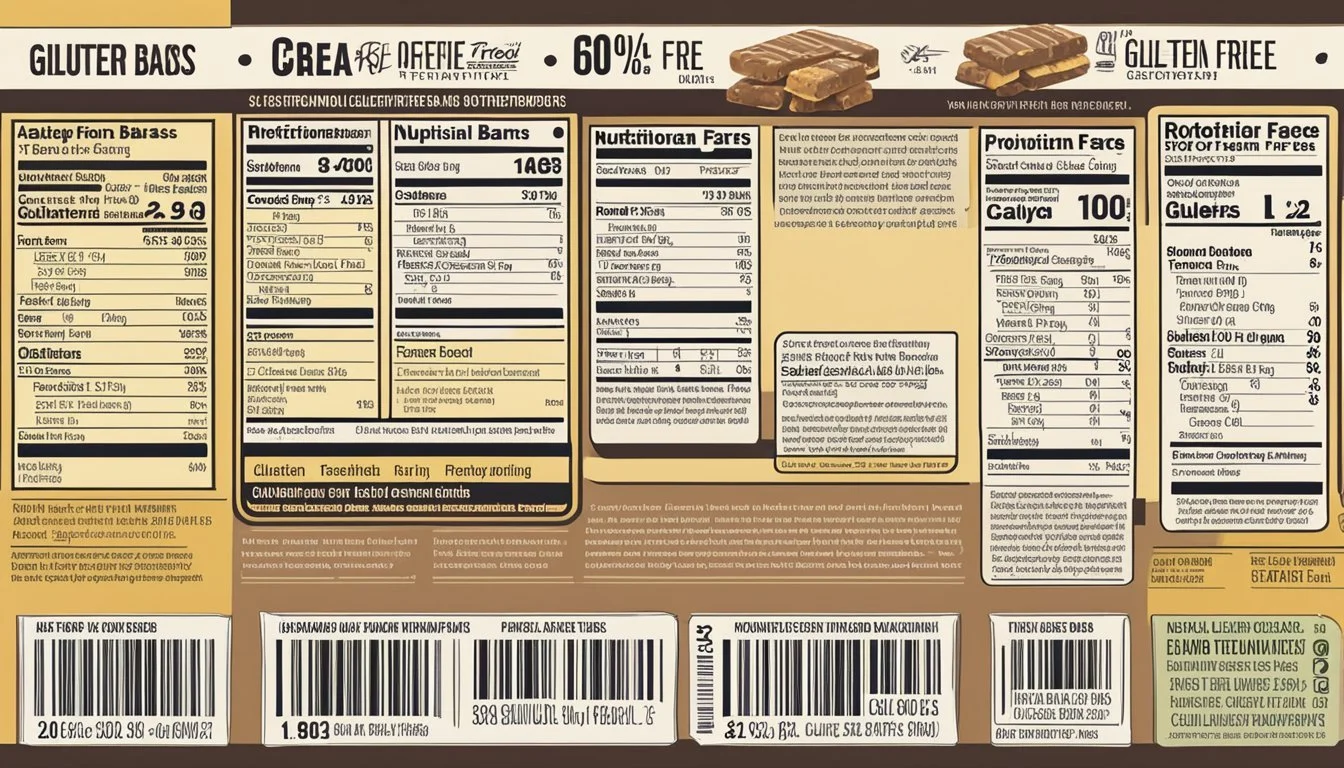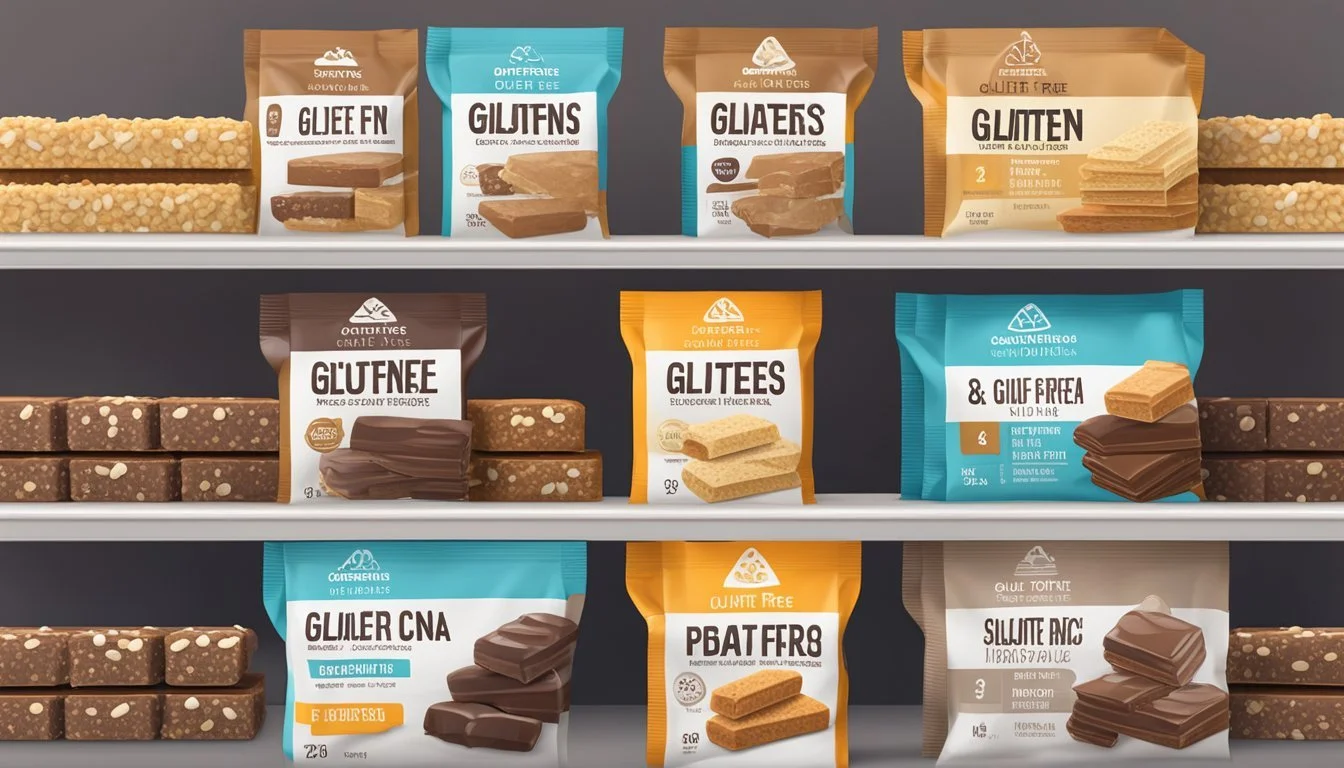Are Protein Bars Gluten-Free?
Unwrapping the Truth About Snack Choices
When it comes to maintaining a healthy lifestyle, protein bars are a popular choice due to their convenience and high protein content. They offer a quick and easy way to fuel the body, especially after workouts or during busy days when preparing a meal isn't feasible. However, for individuals with celiac disease or gluten sensitivities, finding protein bars that align with their dietary needs is crucial. Gluten-free protein bars have emerged as a practical solution, catering to this specific requirement without compromising on the nutritional benefits.
While many protein bars on the market contain gluten, a growing number of brands are recognizing the demand for gluten-free options and are formulating their products accordingly. These gluten-free protein bars often use alternative sources of protein such as brown rice protein, pea protein, and hemp protein, which are naturally free of gluten. Additionally, these gluten-free snacks frequently include other healthy ingredients like roasted almonds and various seeds, providing additional nutrients alongside the essential protein.
It is important for consumers to scrutinize labels and ingredient lists to ensure that the protein bars they select are truly gluten-free. Certification labels and third-party testing results can be reliable indicators of a product's compliance with gluten-free standards. With the availability of a variety of gluten-free protein bars, from organic and vegan to kosher and non-GMO, those who require or prefer a gluten-free diet have a diverse selection of products to choose from, making it easier to find options that are both safe and satisfying.
Understanding Gluten in Protein Bars
When exploring the landscape of protein bars, it's essential to understand the role of gluten and why many consumers opt for gluten-free options. This section breaks down the composition of gluten, its common presence in protein bars, and the potential benefits associated with gluten-free protein bars.
What Is Gluten?
Gluten is a group of proteins predominantly found in wheat, barley, and rye. It lends dough its elasticity, acting like a glue that holds food together, which can also affect the texture of protein bars. Consuming gluten can cause health issues for individuals with celiac disease or gluten sensitivity, triggering an immune response that can damage the lining of the small intestine.
Sources of Gluten in Protein Bars
Gluten can sneak into protein bars through a variety of ingredients. Common culprits include:
Wheat flour or wheat protein isolates
Barley malt extract or syrup
Oats, unless they are specifically labeled gluten-free
It's important for consumers to scrutinize labels since oats can be contaminated with wheat during processing, unless they are certified as gluten-free.
Benefits of Gluten-Free Protein Bars
Protein bars without gluten offer several advantages, particularly for those with gluten-related disorders. They:
Prevent symptoms related to gluten intolerance and celiac disease
Often substitute gluten with healthful, whole-food ingredients
Choosing gluten-free protein bars can also benefit those looking to reduce their overall gluten consumption as part of a balanced diet.
Types of Protein in Gluten-Free Bars
Gluten-free protein bars offer a diverse range of protein sources to cater to various dietary preferences and needs. These proteins are primarily sourced from plants and dairy, ensuring that individuals following a gluten-free diet have plentiful options.
Plant-Based Protein Sources
Pea Protein: A common plant-based option found in gluten-free protein bars is pea protein, which is derived from yellow split peas. Pea protein is a complete protein, containing all nine essential amino acids that the body cannot produce on its own.
Brown Rice Protein: Another prevalent ingredient is brown rice protein, which, despite being hypoallergenic and easily digestible, is not complete in amino acid profile. Manufacturers often combine it with other plant proteins to achieve a full spectrum of amino acids.
Common Plant Proteins in Gluten-Free Bars:
Pea protein
Brown Rice protein
Hemp protein
Soy protein (though some avoid soy due to allergens or GMO concerns)
Dairy-Based Proteins
Whey Protein: Whey protein, derived from milk, is a staple in many protein bars due to its complete amino acid profile and high bioavailability. In gluten-free bars, whey protein must be carefully sourced to avoid cross-contamination with gluten-containing substances.
Common Dairy Proteins in Gluten-Free Bars:
Whey protein isolate (most refined, virtually lactose-free)
Whey protein concentrate (less processed, contains more lactose)
Nutritional Comparison
Protein bars can vary significantly in their nutritional content based on the type of protein used.
Comparison of Protein Types:
Protein Source Benefits Considerations Plant-Based Inclusive for vegans, often high in fiber May need to combine sources Dairy-Based High in BCAAs, often more satiating Potential allergens, not vegan
In summary, gluten-free protein bars can provide a variety of proteins suitable for different dietary needs, ensuring anyone can find an option that fits their lifestyle.
Health and Nutritional Benefits
Protein bars offer a convenient source of nutrition that caters to a range of dietary requirements, including gluten-free options. These bars typically focus on providing a balanced macronutrient profile, aiding in weight management through fiber, and offering a variety of essential nutrients.
Macronutrient Profile
The macronutrient profile of a protein bar is a crucial aspect of its nutritional value. Gluten-free protein bars often contain significant amounts of protein, which can range from 10 to 20 grams per serving. They are formulated to maintain energy levels and support muscle recovery. When selecting a bar, it's essential to consider the balance between proteins, fats, and carbohydrates, as well as aim for options with lower sugar content and a low glycemic index to manage blood sugar levels efficiently.
Fiber and Weight Management
Fiber plays a pivotal role in digestion and weight management. Gluten-free protein bars frequently include fibers which help consumers feel full longer, aiding in appetite control and potential weight loss. These bars can be strategically utilized as a part of one's diet to help regulate calorie intake, as they often provide a satisfying snack with fewer calories than other convenience foods.
Essential Nutrients and Ingredients
Gluten-free protein bars are not only about high protein and low sugar; they also can be fortified with essential nutrients. These may include a range of vitamins and minerals essential for overall health. Some bars incorporate wholesome ingredients such as organic nuts, seeds, and fruit, which contribute additional nutrients and texture. Consumers should read labels carefully to choose options that provide the most benefit, like those with minimal additives, as well as organic, vegan, or non-GMO certifications when relevant to personal dietary preferences.
Dietary Considerations
When selecting a protein bar, it's vital to consider dietary restrictions and preferences, such as allergens, plant-based diets, or low-carbohydrate needs. Here are specific details under each category you need to be aware of.
Allergen Information
Protein bars vary in their allergen contents. Gluten-free protein bars cater to individuals with gluten intolerance or celiac disease by avoiding ingredients like wheat, barley, and rye. However, those with other allergies, such as nuts or dairy, should also inspect labels closely, as many gluten-free options might contain these allergens. Always check packaging for allergen declarations.
Vegan and Vegetarian Options
Vegan protein bars are dairy-free and exclude any animal products, while vegetarian bars may include dairy or eggs. Key protein sources for these bars include organic sprouted brown rice protein and organic pea protein. Look for certifications such as "Certified Vegan" or "Non-GMO" to ensure the bar meets your dietary preferences.
Keto and Low-Carb Compatibility
Keto-friendly protein bars are designed to be low in carbohydrates, aligning with the ketogenic diet's macronutrient ratios. These bars typically have higher fat content and use sweeteners like stevia or erythritol to maintain low net carbs. Carbohydrate counts are crucial for those on a ketogenic or low-carb diet; always verify the net carb content on the nutrition label.
Taste and Texture
When selecting a gluten-free protein bar, consumers seek out satisfying flavors and textures that align with their dietary preferences. The right combination of taste and texture can make a protein bar enjoyable as a convenient snack or meal replacement.
Flavor Varieties
Gluten-free protein bars come in a diverse range of flavors to cater to different palates. Popular flavors include chocolate, which provides a rich and indulgent taste, and peanut butter, known for its creamy and nutty profile. Bars flavored with sea salt can offer a savory contrast to the sweeter options available.
Texture and Consistency
The texture of a protein bar significantly influences the eating experience. Some gluten-free protein bars have a chewy and dense texture, akin to taffy, which can provide a satisfying mouthfeel. Others may include ingredients like nuts or puffed rice to introduce a crunchy element, adding contrast and interest to the bar's consistency.
Sweetness and Natural Sweeteners
Sweetness in gluten-free protein bars is often achieved through the use of natural sweeteners like maple syrup and vanilla extract, which add a rich flavor without the need for refined sugars. Maple syrup contributes a caramel-like sweetness, and vanilla extract infuses a warm aromatic quality, enhancing the bar's overall taste profile. These natural sweeteners are preferred for their perceived health benefits over artificial alternatives.
Popular Gluten-Free Protein Bar Brands
In the market for gluten-free snacks, several brands stand out due to their commitment to offering protein bars that cater to gluten-sensitive individuals. These bars often feature added benefits, such as being high in protein, low in sugar, or incorporating organic ingredients.
High Protein and Low Sugar Options
RXBAR and No Cow are brands that offer protein bars high in protein and low in sugar, making them an excellent choice for consumers looking to maintain their protein intake without the added sugars. RXBARs are known for their simple ingredients list and typically include egg whites and nuts for a healthy dose of protein.
Simply Protein bars also provide a high-protein, low-sugar option. These bars tend to use pea protein as a key protein source and are appreciated for their straightforward and minimal ingredient profile.
Organic and Non-GMO Choices
For those prioritizing organic and non-GMO ingredients, GoMacro Bars are a top pick. They are not only Certified Gluten-Free, but also organic, vegan, and kosher. This brand emphasizes the use of wholesome, plant-based ingredients in their protein bars.
Another brand that aligns with organic values is Perfect Bar. They offer a range of protein bars that include organic ingredients, catering to those who are looking for products with higher quality and environmentally conscious sourcing.
Special Dietary Lines
Some brands have developed special lines of protein bars to suit various dietary needs. No Cow offers dairy-free and high-protein options preferred not just by those with gluten sensitivities, but also by vegans and those following a paleo diet.
GoMacro and RXBAR each provide selections that complement a range of dietary preferences, including paleo-friendly and minimally processed ingredients. These brands strive to ensure that even the most selective eaters can enjoy a protein-rich snack without gluten.
DIY Gluten-Free Protein Bars
Crafting homemade gluten-free protein bars is both an art and a science, providing the ease of customizable nutrition for active lifestyles. Using natural ingredients, these bars can be tailored to fit dietary needs and taste preferences.
Homemade Bar Recipes
The foundation of a good protein bar starts with selecting the right protein powder—whey, pea, rice, or hemp—and combining it with nut butter for cohesion and flavor. One can incorporate quinoa for a complete protein source and textures. Bars may also include chia seeds and cocoa powder, offering antioxidants and a rich taste. Using a food processor helps in achieving a homogenous mixture. Once the mixture is prepared, it is often pressed into an 8-inch square pan to set, before cutting into individual servings.
Customizing Your Protein Blend
Personalization is key when one prepares their own protein bars. An individual may choose specific protein powders based on dietary preferences or allergies. Nut butter, such as almond or peanut, not only adds taste but also contributes to the protein content and texture of the bars. For a hint of sweetness and additional nutritional benefits, ingredients like dried cranberries or other fruits can be folded into the mixture.
Nutrition Bars for Busy Lifestyles
Protein bars are an ideal, convenient snack for people with fast-paced lives. Homemade versions ensure that they are using natural ingredients and can easily be made in batches. The bars are portable, easy to make with no baking required, and can be stored in a refrigerator or freezer for grab-and-go ease. This caters to those who wish to maintain their dietary habits without compromising on taste or quality, even during the busiest days.
Choosing the Right Gluten-Free Protein Bar
When selecting a gluten-free protein bar, consumers must scrutinize labels for gluten-free confirmation, assess sugar content, and consider the balance between taste and nutritional value to align with a healthy lifestyle.
Label Reading and Ingredient Lists
A gluten-free protein bar should clearly state its certification on the packaging. Consumers are advised to look for designations such as "Certified Gluten-Free," which assures that the product meets strict standards for gluten absence. It is critical to examine ingredient lists for hidden sources of gluten, typically found in additives derived from wheat, barley, or rye. Ingredients like sprouted brown rice protein and pea protein are nutritious, gluten-free protein sources commonly found in these bars.
Sugar Content and Sweetener Types
The sugar content in protein bars can vary significantly, and some may contain high levels of added sugars, which are less conducive to a healthy lifestyle. It is beneficial to compare bars based on their sugar content, shown in grams on the nutrition label, and be mindful of sweeteners used:
Sweetener Type Characteristics Natural Sweeteners Dates, honey, may be more satisfying and nutritious Sugar Alcohols Xylitol, sorbitol, may provide sweetness with fewer calories but can cause digestive discomfort Non-nutritive Sweeteners Stevia, sucralose, offer sweetness without calories but may not satisfy cravings for sugar
Balancing Taste and Nutrition
A protein bar should offer a balance between being nutritious and satisfying in taste, without compromising on a gluten-free diet. Bars with organic, non-GMO ingredients tend to provide better nutritional profiles. The ideal bar would incorporate high-quality protein sources—like those from nuts or plant-based options—and fiber for satiety, while avoiding artificial flavors and excessive sweeteners that detract from the bar's health benefits.









